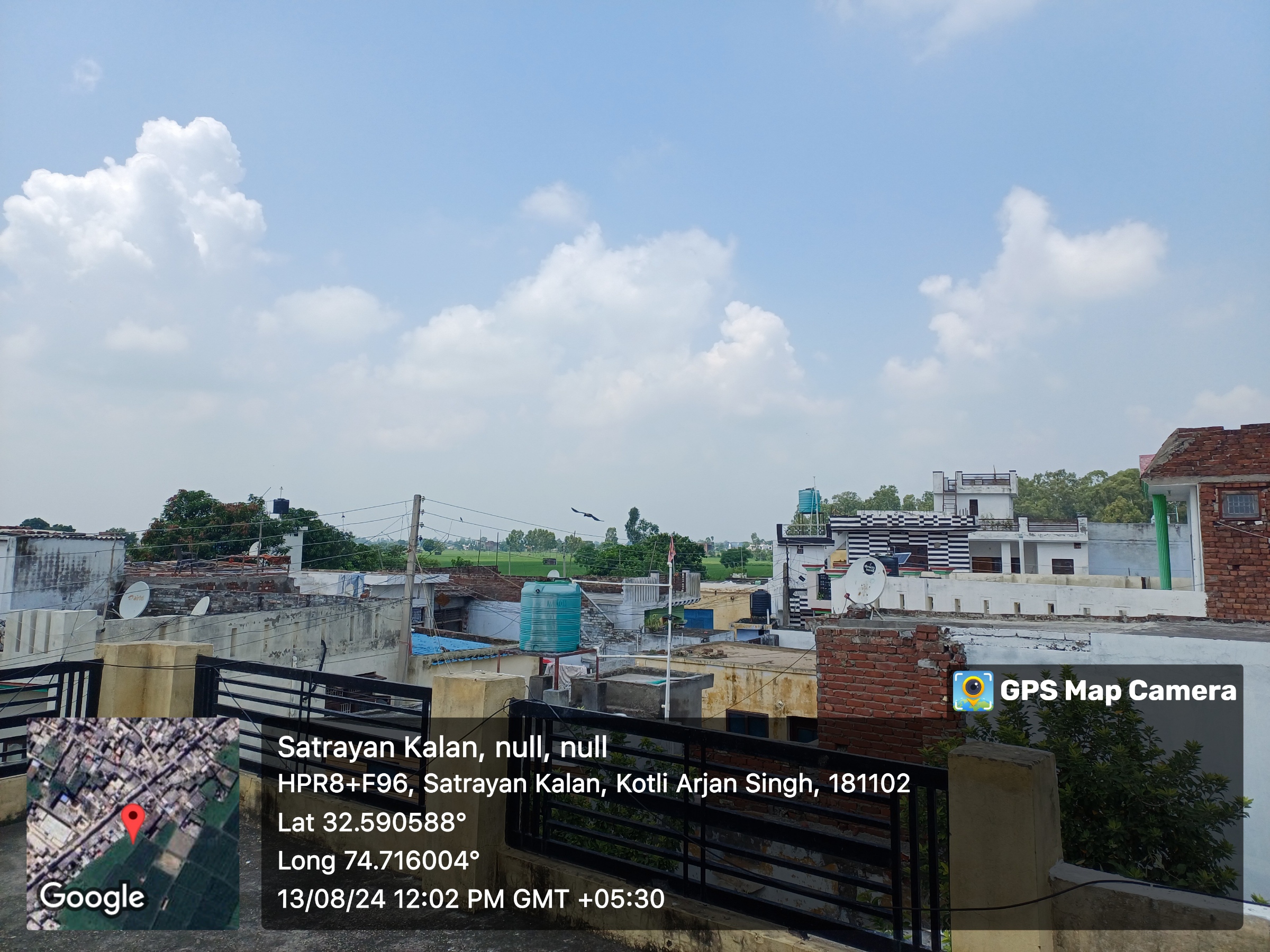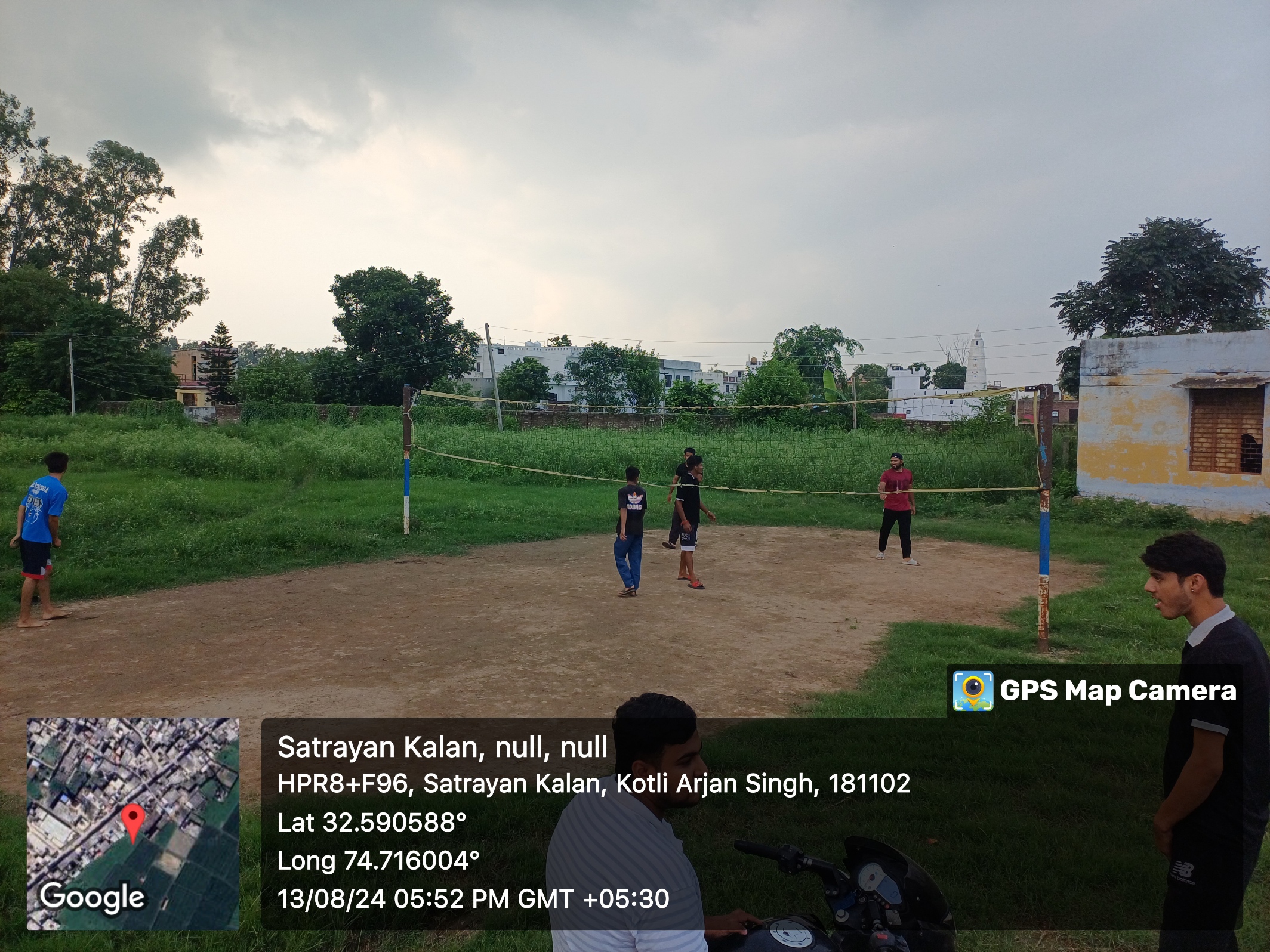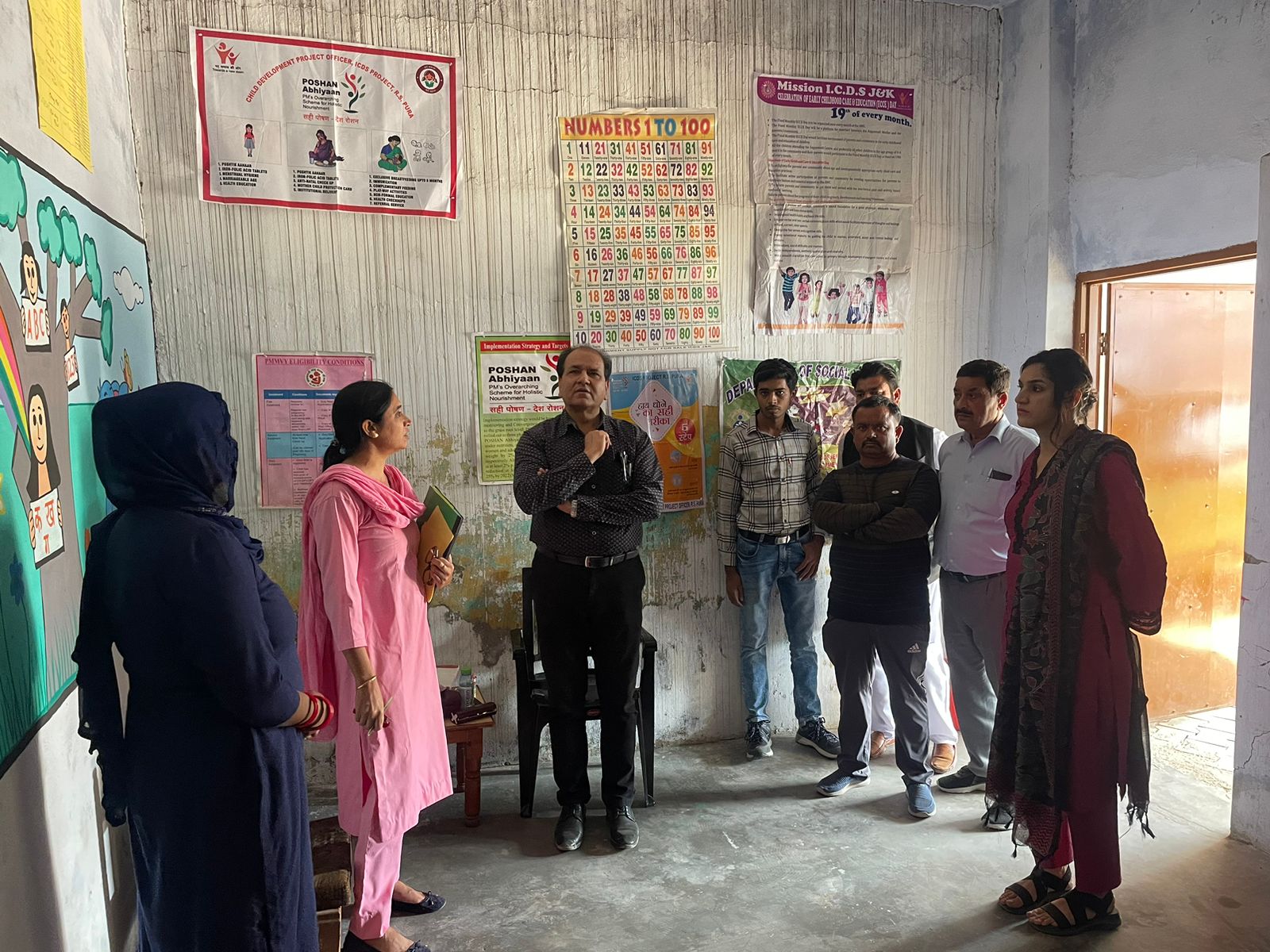Description
Introduction to Satrayan Village
Satrayan is a village located in the R.S. Pura tehsil of Jammu district in Jammu and Kashmir, India. This village, like many in the region, has a strong agricultural foundation and is known for its fertile lands, particularly for the production of premium-quality Basmati rice. Satrayan is strategically significant due to its proximity to the India-Pakistan border, which has shaped its unique cultural and socio-political landscape. The village lies about 20-25 kilometers southwest of Jammu city, offering some urban connectivity while retaining its rural charm and agrarian way of life.
Satrayan Kalan, which falls within the jurisdiction of the R.S. Pura tehsil, is a small yet vibrant village located just 2 kilometers from the sub-district headquarters of R.S. Pura. It is approximately 27 kilometers away from the district headquarters, Jammu. The village, with its geographical area spanning 63.5 hectares, houses a population ranging from 2000 to 3000 people. The village is administered by a sarpanch, an elected representative who oversees local governance. The demographic makeup reflects a mix of male and female residents, with a literacy rate of 72.82%. The village primarily speaks Dogri, Punjabi, and Hindi, with Hinduism being the predominant religion.
Geography and Location
Satrayan’s strategic location near the India-Pakistan international border contributes to its significance. This proximity has not only influenced the region's socio-political dynamics but has also shaped its cultural identity, with a blend of diverse communities living in harmony. The village enjoys a balance between rural life and urban influence due to its accessibility to Jammu city. The fertile land around R.S. Pura, along with Satrayan’s closeness to Jammu, has fostered a thriving agricultural community. The area is especially known for its Basmati rice, which holds both local and national significance.
The village is well-connected by road to nearby towns, making it easier for villagers to access essential services, trade, and education. Public and private buses are a common mode of transport, and people often travel to R.S. Pura or Jammu city for higher education and healthcare services. However, despite its relatively decent connectivity, the village faces challenges in terms of infrastructure and requires further development to meet the growing needs of its population.
Agriculture and Economy
The economy of Satrayan is predominantly agrarian, with farming serving as the primary source of livelihood for most families. The region’s agricultural richness is highlighted by the cultivation of Basmati rice, a crop that is not only a staple food but also a significant source of income for local farmers. The rice grown in this region is well-regarded for its high quality and is often exported to other parts of India. Apart from rice, the villagers also grow other crops such as wheat, maize, and seasonal vegetables, which contribute to the local economy and food supply.
Some villagers diversify their agricultural activities by incorporating animal husbandry or small-scale vegetable farming, further supporting the village's economic stability. The seasonal nature of farming also leads to a trend of migration, with some villagers seeking work in nearby towns or cities during the off-season, especially in trades, construction, or government jobs. This seasonal migration not only supplements household incomes but also brings exposure to a variety of skills and professions.
Demographics and Culture
The demographic composition of Satrayan reflects the unique cultural mix of the region. The village is home to a diverse set of communities, with both Dogra and Punjabi cultures being prevalent. The majority of residents practice Hinduism, but the cultural fabric of the village also includes Muslims and people of other faiths. This diversity is evident in the way villagers celebrate festivals, weddings, and community gatherings, which incorporate a variety of traditions and customs from different cultures.
Festivals like Lohri, Baisakhi, Diwali, and Eid are celebrated with much enthusiasm and are occasions for the villagers to come together. Lohri, for instance, marks the end of winter and is celebrated with bonfires, songs, and dances, while Baisakhi is a harvest festival with religious significance for both Hindus and Sikhs. Diwali and Eid are celebrated with equal fervor, showcasing the harmonious coexistence of different religious communities. Traditional marriage ceremonies are an integral part of the cultural life of Satrayan, marked by multi-day celebrations involving music, dancing, and rituals from both Dogra and Punjabi traditions.
Education and Social Development
Education in Satrayan has seen gradual progress, with primary schools available within or near the village. However, for secondary and higher education, students often travel to R.S. Pura or Jammu city. In recent years, there has been a growing emphasis on education, with more families pushing for improvements in local schools. Some villagers also participate in vocational training programs aimed at developing skills in various trades, which enhances their employability in the growing local economy.
Despite the progress in education, challenges remain, particularly in terms of infrastructure and access to advanced educational facilities. Social development programs, including government initiatives to improve healthcare, provide agricultural subsidies, and offer vocational training, are available, but limited infrastructure and bureaucratic delays sometimes hinder their full implementation. The community remains resilient, working together to address these challenges through collective efforts and strong local leadership.
Challenges and Aspirations
The proximity of Satrayan to the international border presents a unique set of challenges. Border-related security measures and restrictions at times affect the flow of goods, the daily movement of people, and agricultural activities. Villagers are accustomed to these challenges, but they have learned to adapt and find ways to maintain their way of life. The community remains focused on resilience and continues to develop innovative solutions to overcome such obstacles.
In terms of future aspirations, there is a strong desire among the villagers to modernize agricultural practices and improve infrastructure. Many farmers are eager to adopt new technologies such as drip irrigation and mechanized tools to increase productivity. Additionally, there is an increasing interest in education, with many parents encouraging their children to pursue higher studies and explore opportunities in various fields, including government and private sector employment. The youth are also showing a greater interest in technical education, which could help diversify income sources and further modernize the local economy.
Conclusion
Satrayan Kalan village, like many rural areas in Jammu and Kashmir, is characterized by its strong agricultural foundation, rich cultural heritage, and resilience in the face of challenges. The community continues to evolve, balancing its traditional way of life with the opportunities provided by education and modernization. As the village looks to the future, the focus on improving infrastructure, modernizing farming practices, and expanding educational opportunities will play a crucial role in shaping the lives of its residents. With a rich blend of cultures, a thriving agricultural economy, and a strong sense of community, Satrayan remains a testament to the endurance and adaptability of rural India.
Photos
Videos
Location Map
Contact Information
| Address |
Ranbir Singh pora, Jammu, Pin code-181102 |
| Phone Number |
9103005275 |
| Website | https://jkpanchayat.jk.gov.in/backtovillage.php?panchayat=Sarthi%20Kalan&sno=4055&block=Rajpura |
Reviews (1)





































Nice village